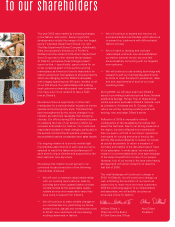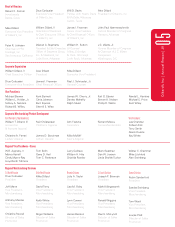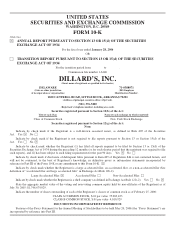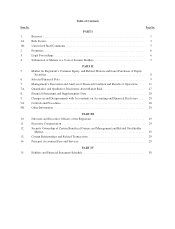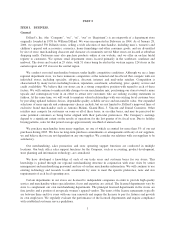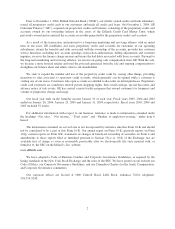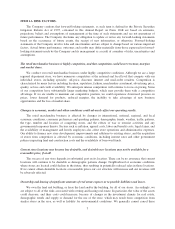Dillard's 2005 Annual Report Download - page 11
Download and view the complete annual report
Please find page 11 of the 2005 Dillard's annual report below. You can navigate through the pages in the report by either clicking on the pages listed below, or by using the keyword search tool below to find specific information within the annual report.ITEM 1A. RISK FACTORS.
The Company cautions that forward-looking statements, as such term is defined in the Private Securities
Litigation Reform Act of 1995, contained in this Annual Report on Form 10-K are based on estimates,
projections, beliefs and assumptions of management at the time of such statements and are not guarantees of
future performance. The Company disclaims any obligation to update or revise any forward-looking statements
based on the occurrence of future events, the receipt of new information, or otherwise. Forward-looking
statements of the Company involve risks and uncertainties and are subject to change based on various important
factors. Actual future performance, outcomes and results may differ materially from those expressed in forward-
looking statements made by the Company and its management as a result of a number of risks, uncertainties and
assumptions.
The retail merchandise business is highly competitive, and that competition could lower revenues, margins
and market share.
We conduct our retail merchandise business under highly competitive conditions. Although we are a large
regional department store, we have numerous competitors at the national and local level that compete with our
individual stores, including specialty, off-price, discount, internet and mail-order retailers. Competition is
characterized by many factors including location, reputation, fashion, merchandise assortment, advertising, price,
quality, service and credit availability. We anticipate intense competition will continue to focus on pricing. Some
of our competitors have substantially larger marketing budgets, which may provide them with a competitive
advantage. If we are unable to maintain our competitive position, we could experience downward pressure on
prices, lower demand for products, reduced margins, the inability to take advantage of new business
opportunities and the loss of market share.
Changes in economic, market and other conditions could adversely affect our operating results.
The retail merchandise business is affected by changes in international, national, regional, and local
economic conditions, consumer preferences and spending patterns, demographic trends, weather, traffic patterns,
the type, number and location of competing stores, and the effects of war or terrorist activities and any
governmental responses thereto. Factors such as inflation, apparel costs, labor and benefit costs, legal claims, and
the availability of management and hourly employees also affect store operations and administrative expenses.
Our ability to finance new store development, improvements and additions to existing stores, and the acquisition
of stores from competitors is affected by economic conditions, including interest rates and other government
policies impacting land and construction costs and the availability of borrowed funds.
Current store locations may become less desirable, and desirable new locations may not be available for a
reasonable price, if at all.
The success of any store depends in substantial part on its location. There can be no assurance that current
locations will continue to be desirable as demographic patterns change. Neighborhood or economic conditions
where stores are located could decline in the future, thus resulting in potentially reduced sales in those locations.
If we cannot obtain desirable locations at reasonable prices our cost structure will increase and our revenues will
be adversely affected.
Ownership and leasing of significant amounts of real estate exposes us to possible liabilities and losses.
We own the land and building, or lease the land and/or the building, for all of our stores. Accordingly, we
are subject to all of the risks associated with owning and leasing real estate. In particular, the value of the assets
could decrease, and their costs could increase, because of changes in the investment climate for real estate,
demographic trends and supply or demand for the use of the store, which may result from competition from
similar stores in the area, as well as liability for environmental conditions. We generally cannot cancel these
3


